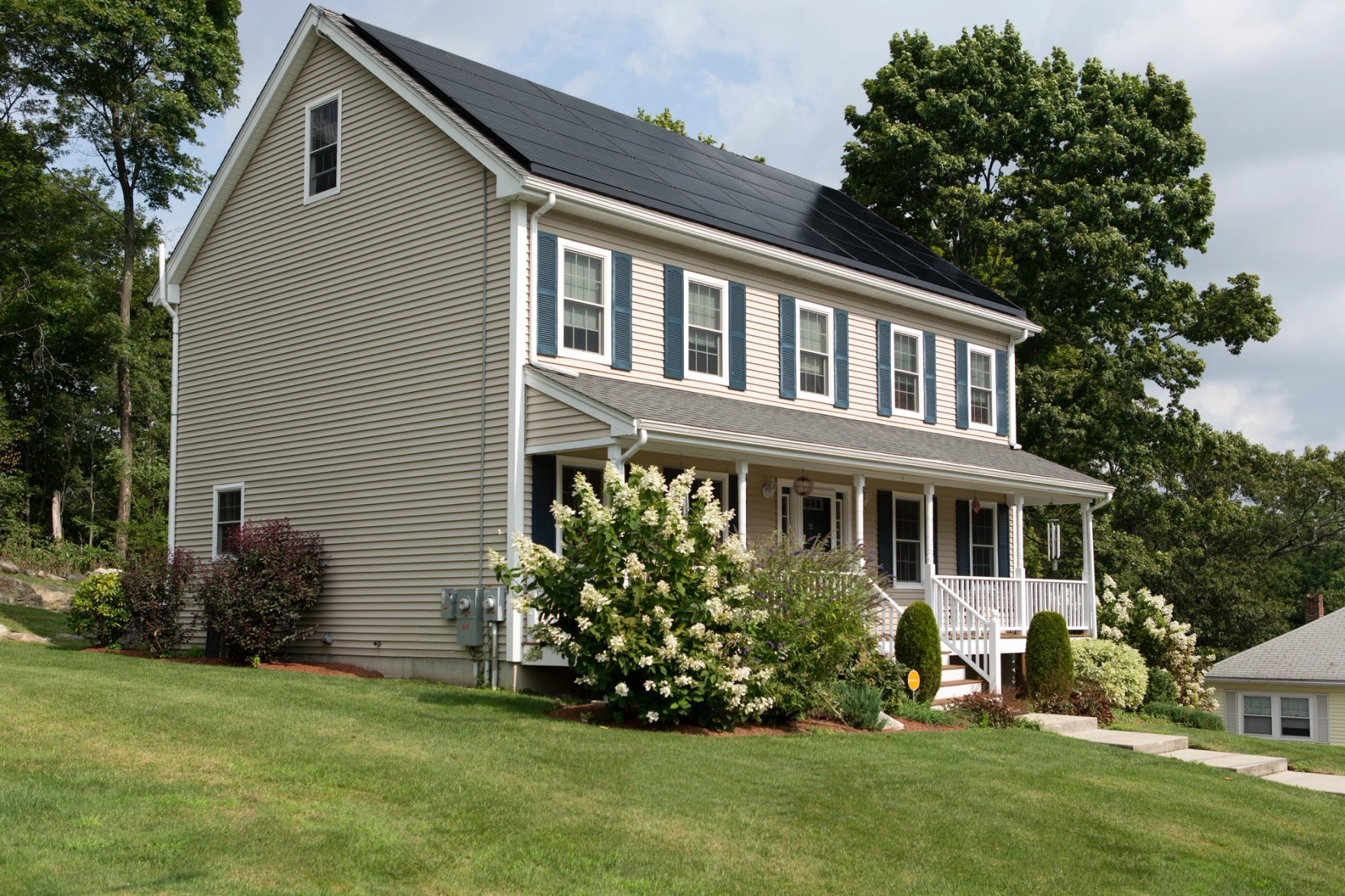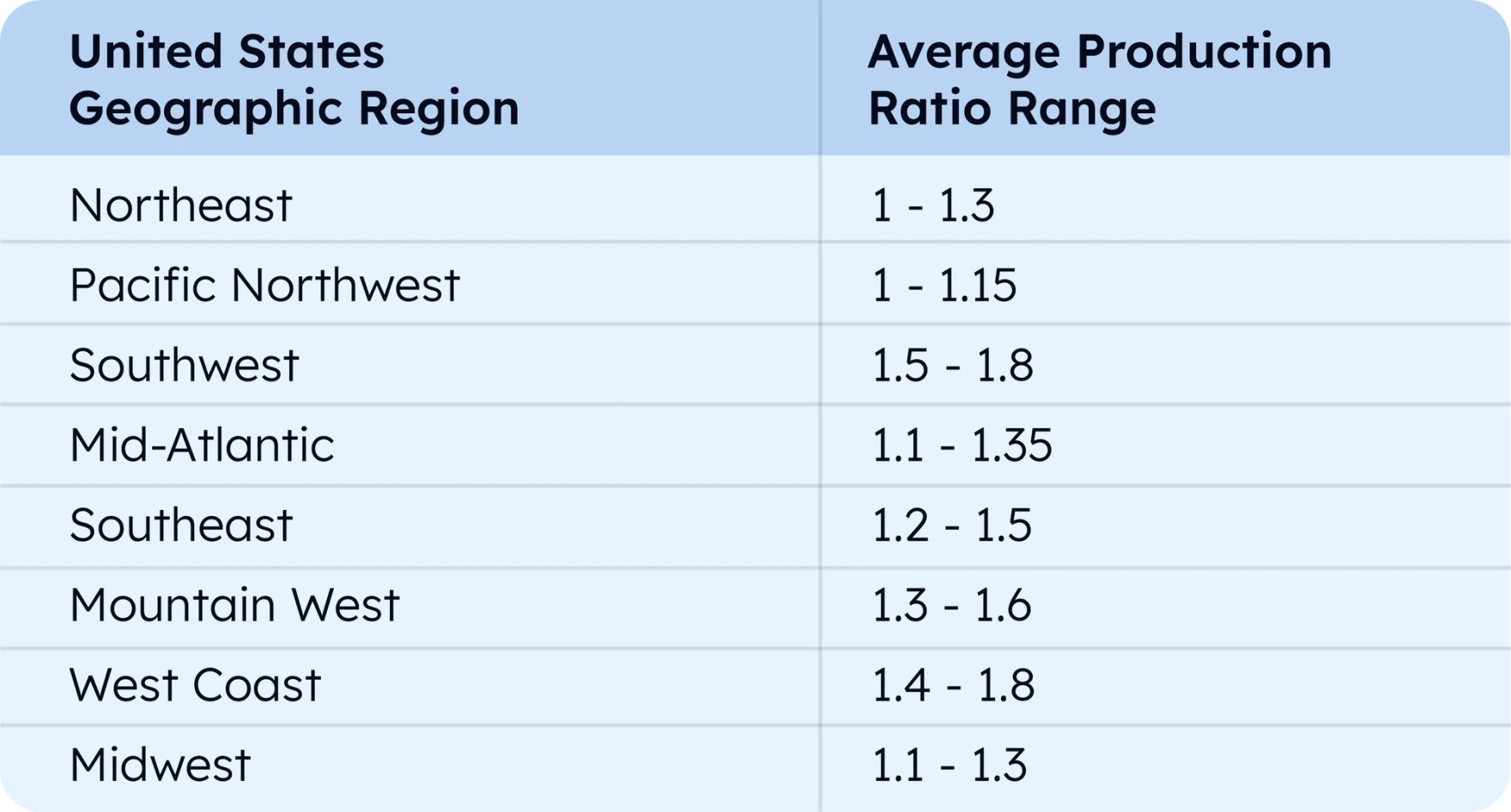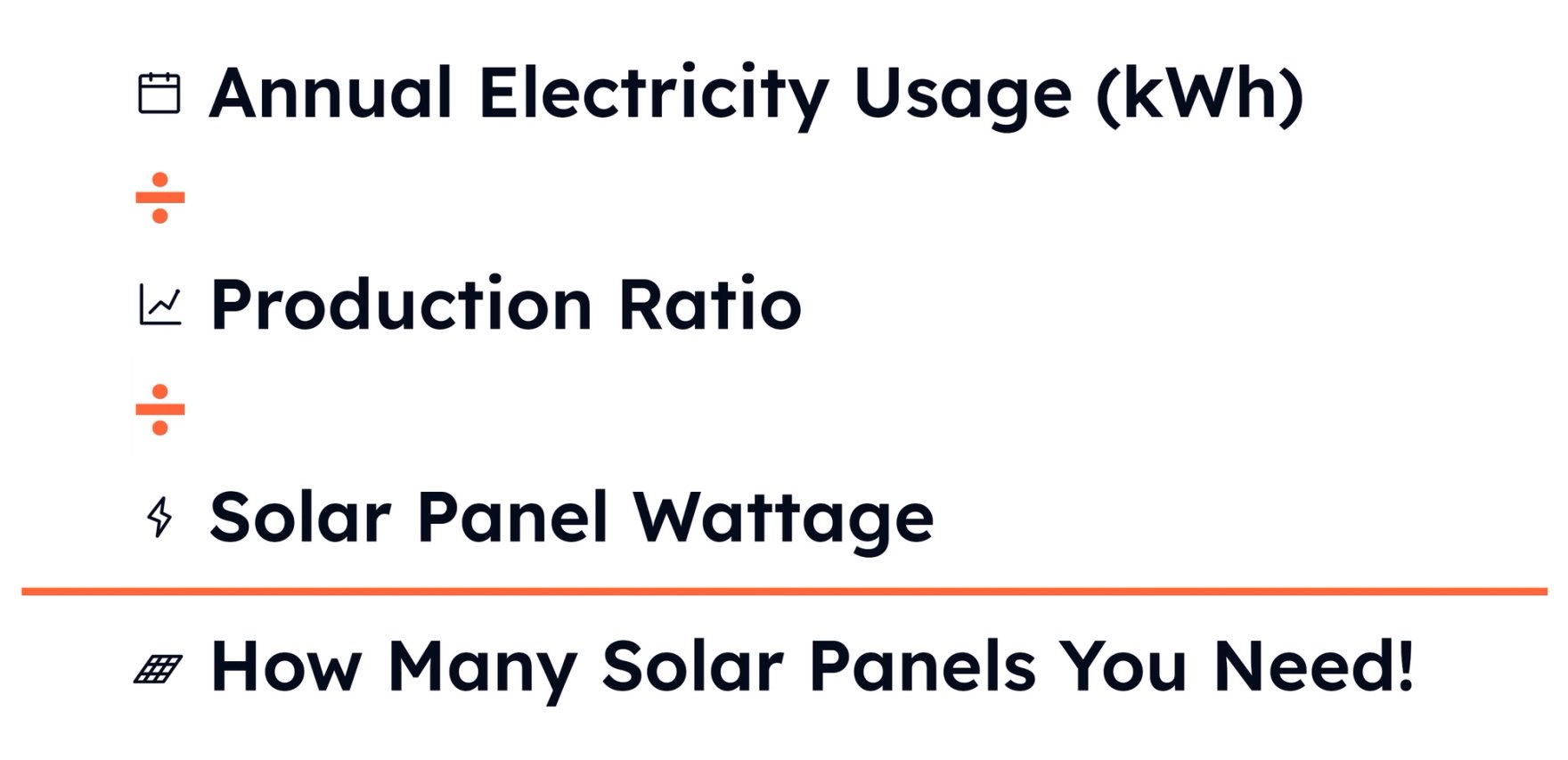
If you’ve been considering installing rooftop solar panels, you might have some unanswered questions about the process like how much solar do I need or what is the cost of installation. Finding answers can be difficult and confusing. Nexamp is here to help with this comprehensive guide, beginning with the most frequently asked question—how many solar panels do I need? The average household needs between 15 and 20 solar panels to offset their energy needs; however, specific individual needs will vary based on energy usage, roof size, roof orientation, and location.
In this article, we explore these factors and give you a formula to calculate how many solar panels are right for you.
How Many Solar Panels Do I Need?
Before we get started, we suggest that you grab a copy of your recent electricity bill. This will make it easier to calculate your solar power needs based on your energy usage. There are three main factors to consider in making the solar panel calculation: your annual electricity usage, the solar panel wattage, and the production ratio. Let’s dive into these three elements.
1. How much solar energy do I need?
Consider your annual electricity usage to determine how much electricity you need your solar panels to produce. You should be able to see your total energy consumption from the last twelve months on your electric bill.
2. What is the wattage of my solar panels?
The solar panel wattage refers to how much electricity each individual solar panel will produce under ideal conditions. You can use 320 watts as an estimate for solar panel wattage.
If you already have a specific type of solar panel in mind, congrats! You’re ahead of the curve. Go ahead and use the wattage of those panels in place of 320 in our equation.
3. What is the production ratio in my area?
The production ratio refers to how much electricity your solar panel produces under the average sunlight and weather conditions in your area. In the U.S., production ratios range from 1-1.6 but it varies by region. The chart below breaks it down in greater detail based on geographic region.

*Data from EnergySage
Now that you have all the components of the equation, let’s plug them in. It’s like your own solar panel calculator!
Solar Panel Calculators
To calculate how many solar panels you need, divide your annual energy usage by the production ratio in your area. Then divide that by the wattage of the solar panels you are considering purchasing, or use our estimate of 320. The outcome of this equation approximates how many solar panels you will need to offset your electricity needs.

Let’s run through a sample solar panel calculation. Say your house has an estimated energy consumption of 12,800 kWh, and you live in an area with a production ratio of 1.6. Assuming the estimated 320 wattage of the solar panels, you would need:
12,800 kWh / 1.6 / 320 = 25 panels total.
Many homeowners are also curious about the square footage of solar panels. A commonly posed question is, “How many square feet of solar panels do I need?” To answer this, consider that the average residential solar panel is around 17.5 feet.
To find the total area of solar panels needed, multiply this number by the result of your solar panel calculation. So, for the example shown above, you would multiply 25 panels by 17.5 feet, giving you the outcome of 427.5 square feet of solar panels.
Let’s run it back and recap.
- To calculate how many solar panels you need, divide your annual electricity usage by the wattage of your desired solar panels, and divide this by your local production ratio.
- Production ratios vary based on geographic region, which means that you may need more solar panels in the Northeast than the Southwest for the same energy production.
- The average solar panel is 17.5 feet. You can use this figure to answer the question: how big a system do I need?
You can also use this solar calculator to assess how many solar panels and kWh of solar you need. And this one to calculate your potential solar savings.
How Many Solar Panels to Power a House?
Another common question is how many solar panels do I need based on the square footage of my home. It is worth noting that a home’s power usage isn’t entirely dependent on its square footage. The number of residents and their energy habits play a much more significant role.
However, it is of course possible to estimate, and we’ve put together some sample calculations which provide an estimate of how many solar panels to power a house based on its square footage.
How many solar panels do I need for a 1,000 sq ft home?
Let’s assume the consumption of a 1,000 sq ft home with four residents and average usage to be 690 kWh per month or 8,280 kWh per year. With a wattage of 320 and a production ratio of 1.4, the number of solar panels you’d need for a 1,000 sq ft home is:
8,280 / 1.4 / 320 = 18.48 or 19 solar panels (rounding up).
How many solar panels for a 2,500 sq ft home?
Let’s assume that five people with regular energy usage habits live in our 2,500 sq ft home. The estimated consumption would be 1,131 kWh per month, or 13,572 annually. Considering a 320-watt panel and a 1.4 production ratio, the number of solar panels you’ll need for a 2,500 sq ft home is:
13,572 / 1.4 / 320 = 30.29 or 31 solar panels (rounding up).
You can also use the chart below as a more comprehensive reference point for home size, energy consumption, and the recommended number of solar panels.

*Data from the Residential Energy Consumption Survey
Now that you understand how to calculate how many solar panels are needed to power a house based on size, let’s get into some other factors to consider before you commit to installing solar on your roof.
Is My Roof Suitable for Solar Panels?
In addition to estimating how many solar panels you need, consider the weight of the panels themselves. The average solar panel weighs around 40 pounds. It’s important to know what size solar system your roof can support, and remember, not all roofs can even support solar.
In addition to the weight, consider the material of your roof, how old it is, and whether it’s pitched or flat. All of these factors will help determine if your roof can support solar panels. It is also best to have a professional roof inspection before you decide to begin the installation process.
How Efficient Will My Solar Panels Be?
All things being equal, the design of the solar panel determines how efficient it is. This, in turn, specifies how well each square foot can convert sunlight into energy.
For example, gridlines on most panels reduce the active surface area. Therefore, they are not as efficient as those without them. In addition, grid panels are susceptible to peeling, further reducing efficiency.
Quality plays a role, too. For example, if the construction is subpar and introduces corrosion and cracking, it can also impact the ability of the panel to absorb sunlight.
But as a rule of thumb, expect residential solar panels to give you between 150 – 370 watts. This translates to an average solar panel’s wattage per square foot of 15 watts.
How Much Do Solar Panels Cost?
The average cost of a solar panel is typically between $0.65 to over $2 per watt for high-end models. This means that an average 6 kW system will set you back up to $12,000, depending on the location. That doesn’t include the solar installation costs, which can bump the price up by another $5,000-$10,000. However, the Residential Clean Energy Tax Credit can offset up to 30% of the cost of solar installation, alleviating some of the financial burden.
Solar Panel Alternatives
At the end of the day, we recognize that installing rooftop solar panels can be a tremendous investment. While federal incentives for solar can significantly lessen the financial burden, the upfront cost can still be daunting. Furthermore, according to the National Renewable Energy Laboratory of the U.S. Department of Energy, approximately 50% of homes can’t support rooftop solar panels.
If you’re unsure about the investment, or can’t install rooftop panels, there’s another way to save with solar energy—community solar!
Community solar is a way for renters, homeowners, and businesses to benefit from solar energy without actually installing anything on their roof. Community solar subscribers realize annual electricity savings with no up-front cost. If you aren't ready for installation, consider community solar as another easy way to save on electricity costs!